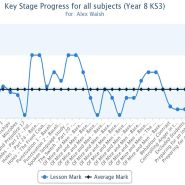As is commonplace for those in the education system, the past 24 months have marked much change, not least of which is the new GCSE grade scale.
Teachers, parents and pupils alike have faced a transition from the old scale of G-A*, to 1-9. Let’s explore what this change means and why it has been put in place.
The consultation
By making GCSEs more demanding, more fulfilling, and more stretching we can give our young people the broad, deep and balanced education which will equip them to win in the global race.
Former Education Secretary, Michael Gove, was the one to set the wheels in motion for GCSE reform. The thoughts behind this consultation was a need to address the perceived idea that GCSEs were getting easier, and that pupils were leaving school ill-equipped for further education or work, with poor literacy and numeracy skills.
Whether or not this new system overcomes any of these reported issues (which are hotly debated in any event), will be interesting to say the least.
The new GCSE grade scale
The new scale will run from 1 to 9, with 9 representing the highest grade, and 1 the lowest. U will remain the marker for ungraded results. Schools in Wales and Northern Ireland are unaffected by these changes, and have kept the current letter-based scale.
This new scale will affect students taking their GCSEs in 2017 and onward.

Read the official documentation on grade descriptors for the new GCSEs here.
Are you a visual learner? Watch this short video from AQA for a quick explanation of the new GCSE grade scale.
Further changes to emerge from the consultation
These changes have been rolled out alongside other reforms for students facing their GCSEs, including:
- The elimination of coursework for most subjects (this is asides from art, dance and drama).
- ‘Bite-sized’ questions have been replaced by essay-structure questions.
- The majority of exams are now undertaken following a two-year course (this compares to the previous structure of exams undertaken at the end of each module).
- Every pupil will now take a minimum of two science GCSEs.
- Students in Wales now undertake two maths GCSEs (this change was introduced in 2015).
The new grading scale, alongside the other secondary school system changes, is set to have an indelible impact on the timeless debate over the relevance of school league tables. But as we have discussed previously, what do school league tables really mean?
Will this new grade scale make any difference to you or your students? Or will parents be confused by the changes made to a decades-old and easily understandable system?









